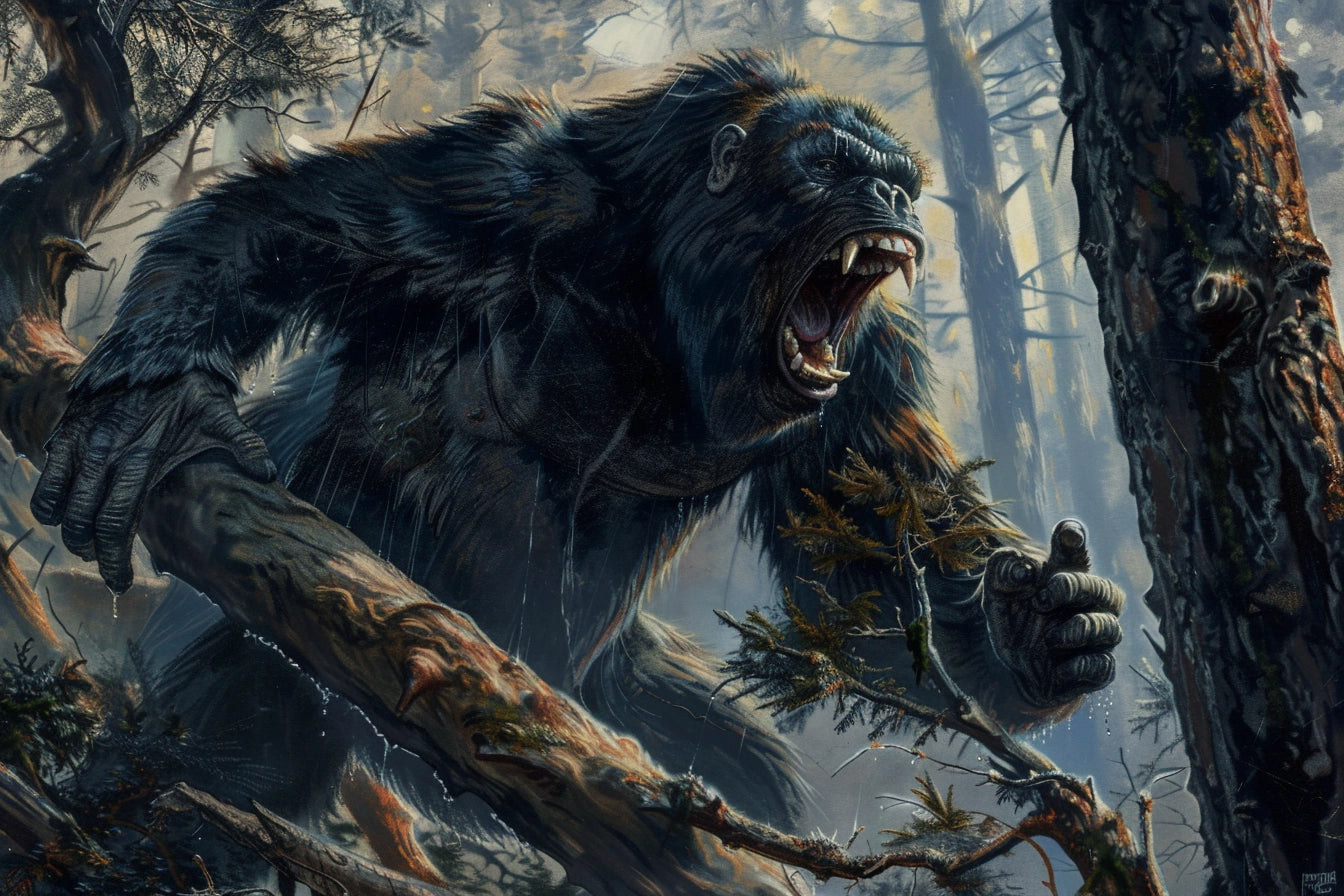Uncovering Gigantopithecus: A Key Piece in the Bigfoot Puzzle

Unearth the ancient mystery of Gigantopithecus, a colossal ape whose extinction offers tantalizing hints about the existence of modern-day enigmas like Bigfoot. Explore recent findings from China suggesting that environmental changes led to Gigantopithecus's demise, sparking intrigue about undiscovered creatures still lurking in our world. Join us as we delve into the paleontological puzzle and contemplate the enduring allure of cryptids.
Exploring the Extinction of Ancient Giants as Evidence for the Existence of Modern-Day Enigmas
Gigantopithecus blacki, a giant ape with a height of about 3 meters, disappeared earlier than previously thought.
Until now, researchers believed that the giant human-like ape went extinct about 100,000 years ago. However, new evidence found in China suggests that the largest primate and hominid that roamed the Earth vanished 295,000 to 215,000 years ago due to an inability to adapt its diet to the changing climate at that time.
Gigantopithecus blacki, defined in 1935 by the German-Dutch paleontologist Gustav Heinrich Ralph von Koenigswald, was named after the Canadian paleoanthropologist Davidson Black, who died a year earlier. The exact timing of the extinction of the giant human-like ape and the reasons behind it remained unclear for a long time.
The evidence revealing the story of the giant ape's extinction was found as part of a large-scale project that included collecting findings from 22 cave sites in Guangxi Province, southern China. The research team extensively examined the fossil remains belonging to Gigantopithecus blacki, including dating them and extracting information that shed light on how the species coped with environmental changes, which ultimately led to its extinction.
According to the study published in the journal Nature, the timeframe for the extinction of Gigantopithecus blacki is much earlier than previously thought, occurring before 100,000 years ago. Gigantopithecus blacki thrived in dense and nutritious forests until about 700,000 to 600,000 years ago, after which its environment rapidly changed, with sharp seasonal fluctuations characterized by freezing cold periods and dry or wet spells.
During this time, more and more forests turned into open grasslands, diminishing the food supply upon which Gigantopithecus blacki relied. Unlike many other animals of that period, the giant ape failed to adapt to the environmental changes, leading to its eventual extinction.
In contrast, species of orangutans, closely related to Gigantopithecus blacki within the pongine subfamily, managed to adjust their size, behavior, and habitat preferences as the environmental conditions changed. Gigantopithecus blacki relied on a highly specialized and inflexible diet consisting of bamboo, fruits, leaves, shoots, and roots, which became less accessible due to environmental changes.
Moreover, it was less mobile than orangutans, significantly reducing the geographic range where it could find food. Understanding the reasons behind the extinction of past species that remain unsolved provides valuable insights into the resilience of primates and the fate of other large animals, both in the past and in the future.
Conclusion:
While the extinction of Gigantopithecus blacki sheds light on the challenges faced by ancient primates, it also fuels speculation about the existence of modern-day counterparts, such as Bigfoot. The possibility of undiscovered large hominids roaming remote regions continues to captivate the imagination of many, prompting further exploration and research into the mysteries of our natural world. Perhaps, just as Gigantopithecus blacki once roamed the Earth, other elusive creatures may yet be waiting to be discovered, adding to the rich tapestry of life on our planet.








